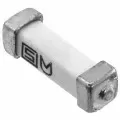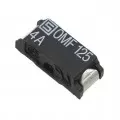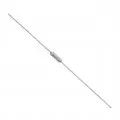OUTLINE:
How Do You Know If A Fuse Is Blown
 146
146The earliest fuse was invented by Edison more than a hundred years ago. Because the industrial technology at that time was underdeveloped and incandescent lamps were very expensive, it was originally used to protect expensive incandescent lamps. How do you know if a fuse is blown? What should you do if the fuse burns? How to replace it? Don't worry, read the following content and you will know how to solve it.

The use of fuse
The fuse is also called a fuse. The IEC127 standard defines it as a "fuse-link". It is an electrical component installed in a circuit to ensure the safe operation of the circuit.
Its function is: when a circuit fails or is abnormal, the current continues to rise, and the increased current may damage some important or valuable components in the circuit, and may also burn the circuit or even cause a fire. If the fuse is correctly placed in the circuit, then the fuse will melt and cut off the current when the current abnormally rises to a certain height and at a certain time, thereby protecting the safe operation of the circuit.
How do you know if a fuse is blown
The most direct way is to have a visual inspection. However, there are some occasions that you can feel the unusual of your circuit. Besides visual inspection, here are some tell-tale signs that to know if a fuse is blown.
- A short circuit may causes sparks or even smoke or flames. You may even hear a crackling sound. This process can damage or even destroy the devices the circuit is connected to.
- If there is a ground fault, an excessive amount of current flows down unintended routes, potentially damaging the systems to which it is connected. Unlike the normal short circuit mentioned above, you are unlikely to hear crackling sounds, see sparks, or flames, but you may notice strobing lines on a computer or television.
- Electrical outlets may stop working due to damage or simply because they're outdated. If your outlet appears the damaged signs include burn marks, melting, chips, and cracks. Or you may feel warm while using the outlet.Faulty electrical outlets may cause blow a fuse or, more commonly, trip a circuit.
- You may have damaged wiring, then you can listen for buzzing noises, look for dimming lights, and search for any discoloration or smoke.
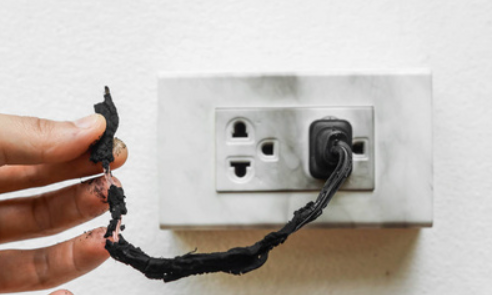
Reasons for fuses to burn out
1. The fuse's current carrying value exceeds the rated current value and burns out.
2. There is a short circuit in the circuit, which generates a short-circuit current. The short-circuit current is too large to melt the fuse.
3. Too many electrical appliances burn out the fuse, just like using a leakage protection switch. If the power is too large and the load is too large, it will trip.
Reasons why fuses often burn out
1. Unstable voltage. Unstable voltage nearby will cause the power of electrical appliances to change frequently, resulting in the current passing through the fuse changing frequently, and the fuse will burn out!
2. Too many electrical appliances are used at the same time, and the power is too large, exceeding the ability of the fuse to pass current normally.
3. Your power line has been renovated, and the current can be increased after the line is renovated, but you have not replaced it with a thicker fuse accordingly.
4. The fuse itself is aging, has been used for too long, and has been passing current for a long time. As we all know, fuses also have a certain resistance, so the current passing through will heat up, become thinner, and the resistance will become larger, and finally cause it to burn out! In addition, the fuse will become thinner due to friction and slow oxidation in the air during long-term storage!
Solution
Knowing how to till if a fuse is blown, and then you need to do something to solve this question.
1. You can use the electrical appliances separately first, that is, turn them on one by one to see if they work properly. If each appliance is used alone for a long time and the fuse is not burned out, it means that all appliances are working properly without any problems. If the fuse is burned out when the appliances are used at the same time, it means that the load is exceeded. You can replace the fuse with a thicker one. But it is best to ask an electrician to help replace the appropriate fuse. A fuse that is too thin or too thick is not conducive to the protection of home appliances and power supply.
2. If the fuse is burned out when any of the appliances is used alone, it means that the appliance may be faulty and it is time to find a professional electrical repairman to check the appliance.
Note: When repairing, be sure to turn off the main switch and have someone watch it to prevent it from being closed, or lock it if you can, or use a short-circuit tool to insert it into the circuit and unplug it before turning it on.
How to replace
1. Cut off the main power supply;
2. Use a screwdriver to open the fuse box, and then check to see if the fuse is broken;
3. Normally, use a screwdriver, the voltage of 220V is not a joke;
4. After the fuse is broken, take out a fuse of similar length and install it on the fuse box. After the installation is completed, check whether it is installed properly, and install it after checking.
Replacement precautions
(1) Replace the fuse according to the rated current value indicated on the fuse box cover. Do not replace it with a fuse with a higher rated current.
(2) If the new fuse blows immediately, it means that there may be a fault in the circuit system and it should be repaired as soon as possible.
(3) If there is no spare fuse. In an emergency, you can replace it with a fuse on other equipment that has no impact on driving and safety.
(4) If you cannot find a fuse with the same current load, you can use a fuse with a lower rated current than the original fuse.
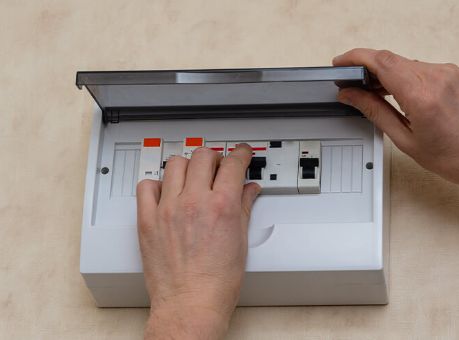
How to choose suitable fuse
1. Application Voltage (AC or DC): The rated voltage value of the fuse must be equal to or greater than the voltage of the application circuit.
2. Maximum Fault Current: The fuse's breaking current rating must meet or exceed the maximum fault current of the circuit.
3. Physical Size Limitations: Refer to the manufacturer's data sheet for fuse length, diameter, and height information.
4. Fuse Characteristics: Refer to the manufacturer's data sheet for information such as mounting type/outline dimensions, ease of removal, axial leads, visual indication, etc.
5. Fuse Holder Characteristics and Re-evaluation: Refer to the manufacturer's data sheet for information such as clip, mounting block, panel mount, PCB mount, RFI shielding, etc.
6. Agency Approval Required: Refer to the manufacturer's data sheet for information on specific device agency approvals, such as UL, CS-Ann, VDE, MEti, or MITI. Military requirements require special consideration.
7. Ambient Temperature: The higher the ambient temperature, the hotter the fuse will operate and the shorter its life. Conversely, operating at lower temperatures will extend the life of the fuse. Fuses also get hotter when the normal operating current approaches or exceeds its rated value.
8. Normal Operating Current: The reliable operating current of a fuse at 25C is usually 75% of the rated current to avoid failure. Example: It is not generally recommended to use a fuse rated for 10A above 7.5A in a 25C environment.
9. Overload Current: This defines the current that the circuit needs to be protected against in a fault condition. The fault condition can be the current, or the current and the maximum fault time that can be tolerated before damage occurs. In matching the fuse to the circuit, the time-current curve should be considered, however, remember that the curve is based on average data.
10. Pre-production application testing and verification: Verify the selection by requesting samples to be tested in the actual circuit. Before evaluating the sample, ensure that the fuse has a good electrical connection and that the cable connection used is appropriate. Testing should include life testing under normal conditions and overload testing under fault conditions to ensure that the fuse works properly in the circuit.
11. Pulse (current surge, inrush current, starting current and circuit transient): Electrical pulse conditions may vary greatly in different applications. Different fuse structures may not react in the same way to a given pulse condition. The thermal cycle and possible mechanical fatigue generated by the electrical pulse will affect the service life of the fuse. The initial pulse or starting pulse is normal for some applications. In these applications, the fuse should be selected to include a thermal delay design to maintain a normal starting pulse and still provide protection during long-term overloads. For the selection of fuses for this type of starting pulse, we should refer to and compare the fuse's time-current curve and I2t rating.

Disclaimer: The views and opinions expressed by individual authors or forum participants on this website do not represent the views and opinions of Chipsmall, nor do they represent Chipsmall's official policy.

share this blog to:






